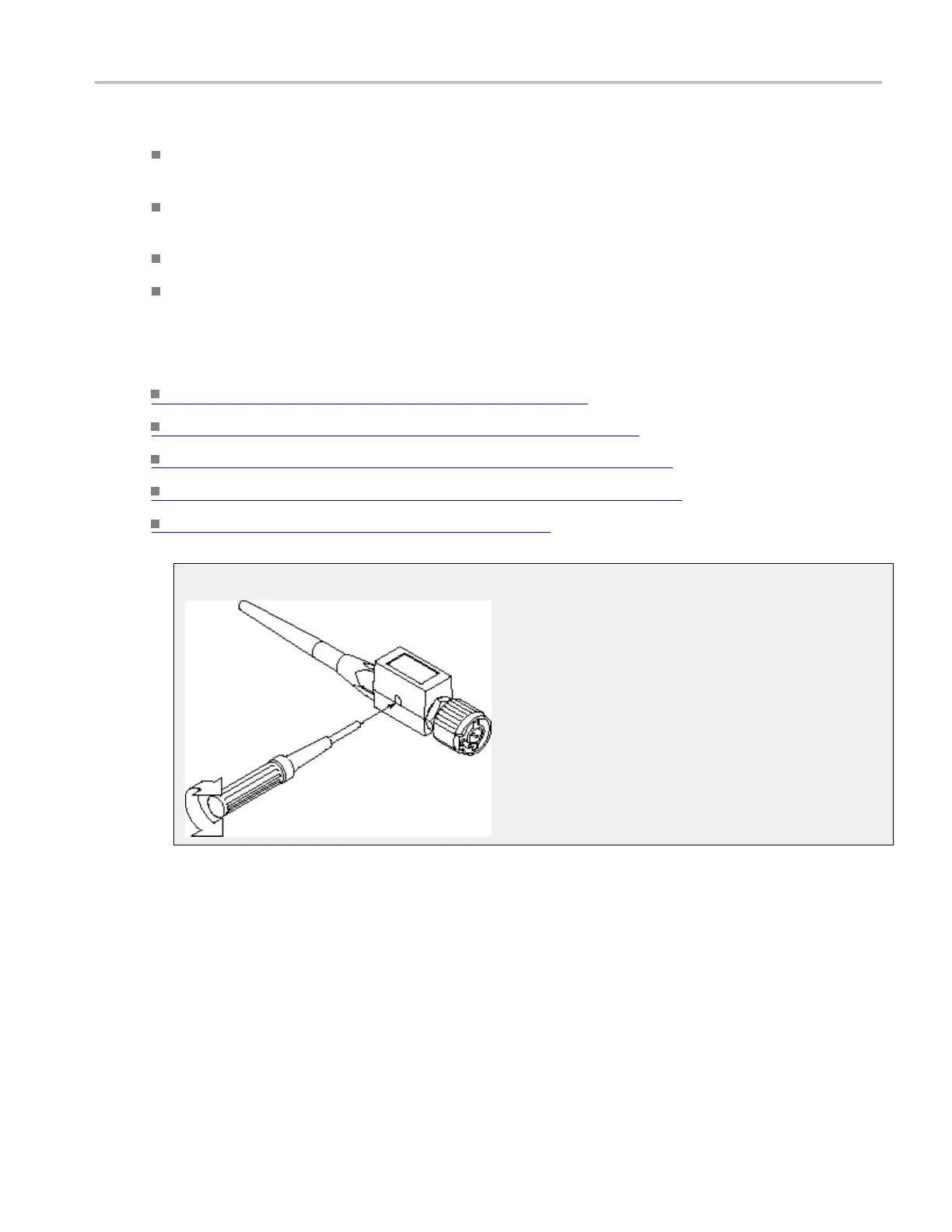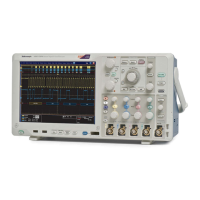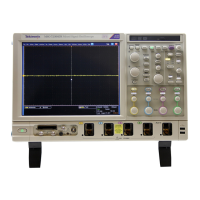Vertical Setups Probe Setup Control Window
Tips for Reducing Measurement Noise
Use the least amount of attenuation. Probe noise is a function of probe attenuation, for example, using
a 25X probe, versus a 5X probe, results in significantly greater noise.
Select the lowest attenuation that displays the input voltage swing of your signal; then use the vertical
scale setting to adjust the waveform display on screen, as needed.
Use a lower bandwidth probe to reduce noise.
Reduce the vertical bandwidth of your oscilloscope. In general, a bandwidth 3 to 5 times the
fundamental frequency of the waveform is a good compromise, allowing capture of harmonic content
while minimizing noise.
What do you want to do next?
Learn more about the Probe Status indicator. (see page 510)
Learn more about the Probe Compensation controls. (see page 502)
Go to a st
ep-by-step procedure to calibrate active probes.
(see page 571)
Go to a step-by-step procedure to calibrate passive probes. (see page 572)
Learn more about the Vertical controls. (see page 505)
Probe
Compensation Adjustment
DSA/DPO70000D, MSO/DPO/DSA70000C, DPO7000C, and MSO/DPO5000 Series 499

